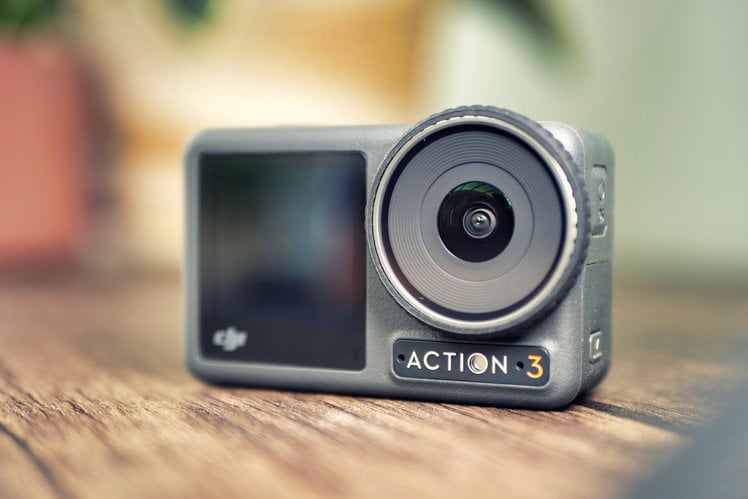
DJI’s latest action camera marks a return to its original GoPro-inspired form factor, and its original naming, too.
While last year’s Action 2 impressed us with its modularity and unique design, the unusual camera brought with it some serious compromises. There were just too many workarounds required for the camera’s tiny chassis, and overheating issues were fairly common.
With the Osmo Action 3, DJI seems to have learned from its mistakes and has returned to a safer design that should be far more user-friendly and robust.
On paper, it seems like it could prove to be a real rival to GoPro’s market dominance, so let’s find out how it shapes up.
Design
- Weight: 145 grams
- Waterproof up to 16m (52.5ft) without housing
- Front-facing touchscreen, magnetic mounting system
At first glance, the Osmo Action 3 looks almost exactly like the original Osmo Action – however, as you look closer, there are numerous changes to be found. One of the first things we noticed was that the Action 2’s awesome magnetic quick-release mounting system makes an appearance on the camera’s base. What’s more, it has been updated for this release, offering a more secure locking mechanism than before.
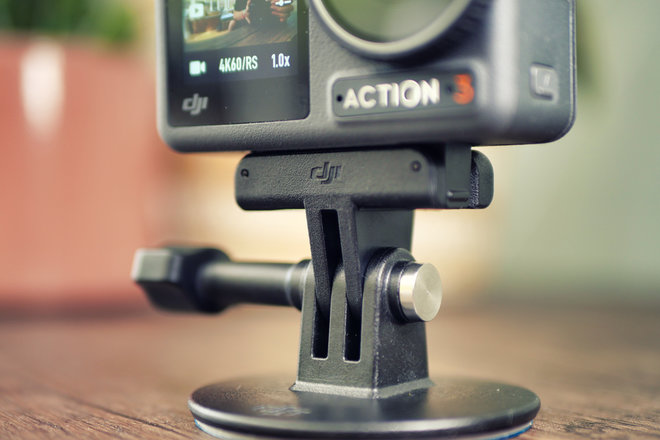
On the original Osmo Action, you needed to put the camera in a frame to use it with any kind of mounting solution. This upgrade brings the camera more in-line with GoPro’s integrated mounting tabs. With that said, there is still a frame included in the box, and that’s used for mounting the camera in a vertical orientation. It’s a shame that the vertical mount couldn’t be integrated into the body, but given that it would interfere with the battery door, the decision makes sense.
The Action 3 features a touchscreen display on the front of the camera, so you can change settings without needing to access the rear. We could see this being useful when the camera is mounted in a hard-to-reach location, and it may also prove handy for vloggers wanting to switch settings on the fly.
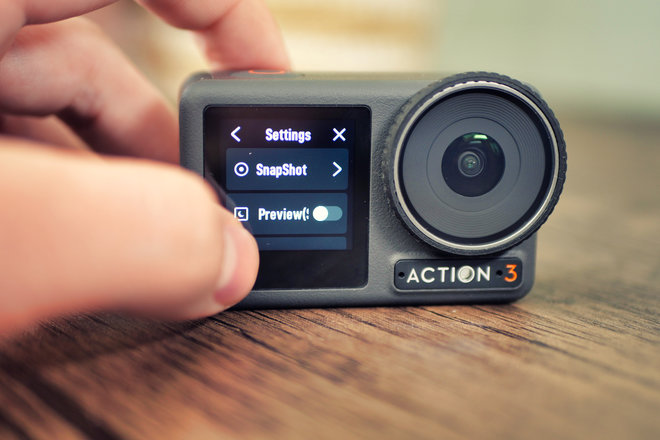
There’s a large side door that flips out in a similar fashion to the GoPro Hero 10 Black, and this hides the battery and microSD card slot. On the opposite side, there’s a door for the USB-C. The buttons have shifted to match GoPro’s configuration, too, whereas previously both the power/menu button and record button were on the top of the device.
We were very happy to see the return of the replaceable lens cover, which was absent on the Action 2. In our opinion, a replaceable lens cover is pretty much essential on any device that’s designed for action sports use. The shape makes the protector much easier to remove than on a GoPro, which can be comparatively quite difficult. There are some unusual things going on with its design, though.
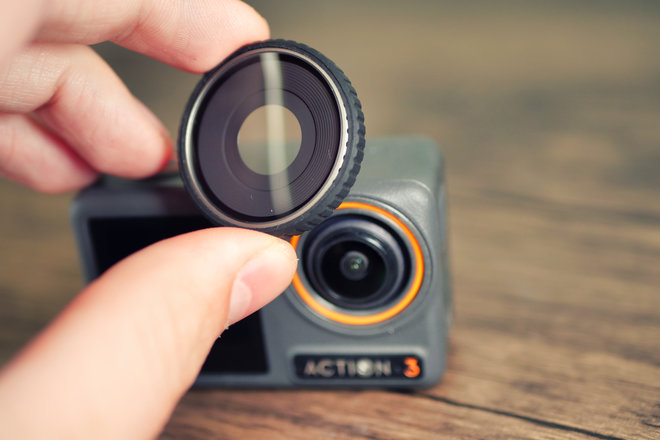
The lens protector itself is made from glass with an aluminium knurled ring around the edge. It comes fitted with a rubber bumper around the edge to protect the aluminium. It’s easy to see why the rubber ring would be necessary, but the fact that it’s a separate piece means you could easily lose it. To us, it seems like a bit of an afterthought, and it would make more sense for the lens protector to be made of a more durable material that doesn’t need a cover.
Another interesting aspect of the design is that DJI has used the “O” in the Action 3 logo to house a small colour temperature sensor. We thought this was a clever touch, and although we don’t recall seeing an external colour temperature sensor on an action camera before, it’ll be interesting to see what effect it has in use.
Features and battery
- Swappable 1770mAh battery, 30W fast charging
- Wi-Fi live streaming and webcam support
- InvisiStick for Skiing feature
The battery is what DJI calls a 1770mAh Extreme Battery, and it’s essentially the brand’s answer to GoPro’s Enduro battery. Compared to GoPro’s solution, it offers an additional 50mAh of juice and can withstand temperatures down to -20 celsius (compared to -10 on the Enduro).
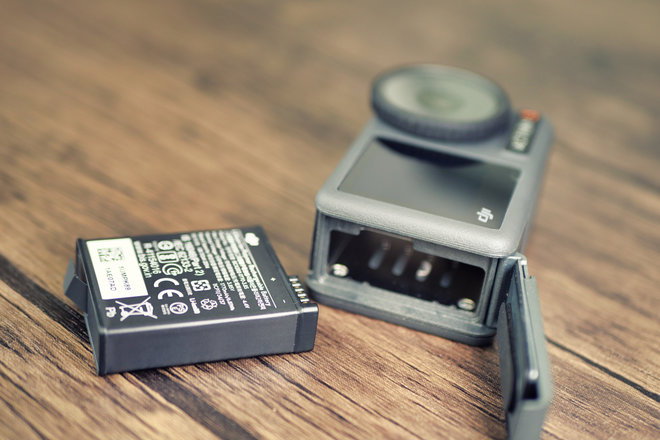
The Osmo Action 3 supports fast charging and will give you an 80 per cent charge in just 18 minutes. Flat-to-full takes around 50 minutes with DJI’s 30W USB-C charger, which is sold separately – only a USB-C cable is supplied in the box.
The bundle that we’re testing came with a three-bay battery charging case, which is a neat little solution for fast-charging multiple batteries at once. We love that the case has a couple of microSD card slots on the lid for keeping your storage handy, too. It also functions as a power bank, so you can top up your phone if you have an appropriate cable.
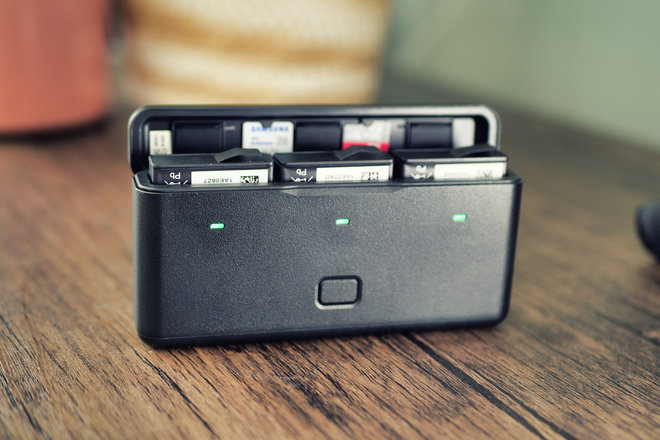
The Osmo Action 3 can be used as a USB webcam and also supports live streaming over Wi-Fi, which is pretty much expected of a high-end action cam in 2022. We haven’t had time to test these features yet, but we’ll be updating this review once we do.
What’s more unique, though, is a feature called InvsiStick for Skiing. This masks over a selfie stick, creating an invisible stick effect that’s normally only achievable with a 360 camera. DJI says this only works with snow sports, and unfortunately, snow is quite hard to come by at this moment, but it could be very useful if it works as advertised.
Video and photo capture
- Video resolution: 4K/120fps, 2.7K/120fps, 1080p/240fps
- Photo resolution: 12MP
- RockSteady 3.0, HorizonBalancing, HorizonSteady
The DJI Osmo Action 3 offers an extremely wide field of view, similar to that of the Action 2. The extremely wide lens was one of our favourite things about last year’s camera, so we’re very happy to see it make its way here, too.
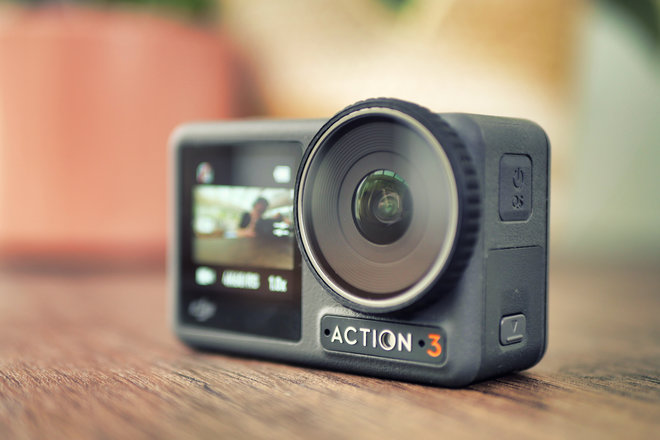
The camera can’t quite match GoPro’s best when it comes to video resolutions and frame rates, but 4K 120fps and 1080p 240fps are more than enough for the majority of users. The photo resolution is a little lacklustre, at just 12MP, but the resolution isn’t everything -and we’ll hold our judgement until we see the results.
RockSteady stabilisation was a strong point with both previous models, so we’ve got high hopes for the latest iteration. Unfortunately, we’ve not had time to assess the results just yet, so we’ll be back with more in-depth analysis as soon as possible.
